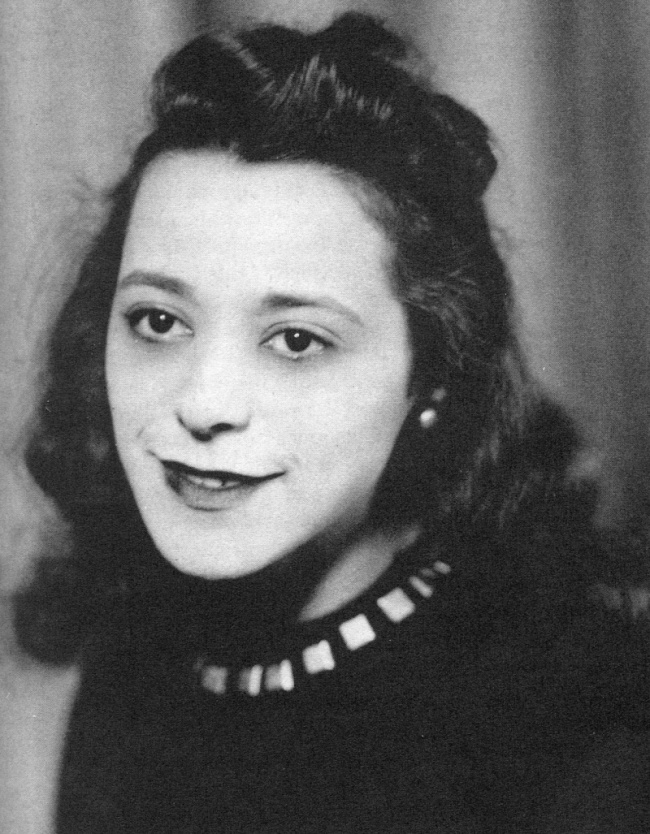Category: Canada Canadian Top List
Source: https://top-list.co/top-most-important-historical-figures-in-canada-v9633.html
- John A. Macdonald
- Jacques Cartier
- Samuel de Champlain
- Louis de Buade de Frontenac
- John Graves Simcoe
- Isaac Brock
- George-Étienne Cartier
- Arthur Currie
- James Gladstone
- Viola Desmond
John A. Macdonald
Sir John Alexander Macdonald (January 10 or 11, 1815 – June 6, 1891) was Canada’s first prime minister, serving from 1867 to 1873 and then again from 1878 to 1891. He was the dominant figure of Canadian Confederation, with a political career spanning nearly half a century.
Macdonald was born in Scotland, but his family moved to Kingston, Ontario, when he was a child (today in eastern Ontario). As a lawyer, he was involved in several high-profile cases and quickly rose to prominence in Kingston, which elected him to the Province of Canada legislature in 1844. Under the colony’s volatile political system, he had become premier by 1857. In 1864, when no party could govern for an extended period of time, Macdonald agreed to George Brown’s proposal that the parties form a Great Coalition to seek federation and political reform. Macdonald was the driving force behind the subsequent debates and conferences that resulted in the British North America Act, 1867, and the establishment of Canada as a nation on July 1, 1867.
Only William Lyon Mackenzie King served as the new nation’s first prime minister for longer than Macdonald. During his first term, Macdonald established the North-West Mounted Police and annexed the North-Western Territory, Rupert’s Land, British Columbia, and Prince Edward Island, as well as expanding Canada. He resigned from office in 1873, following a scandal in which his party accepted bribes from businessmen seeking the contract to build the Canadian Pacific Railway. He was, however, re-elected in 1878. Macdonald’s greatest achievements were establishing and directing a successful national government for the new Dominion, forging a strong Conservative Party through patronage, promoting the National Policy’s protective tariff, and completing the railway. He fought to derail provincial efforts to reclaim power from the federal government in Ottawa. In 1885, he approved the treasonous execution of Métis leader Louis Riel, which alienated many francophones from his Conservative Party. He held the position of Prime Minister until his death in 1891.
In the twenty-first century, Macdonald has been chastised for his role in the Chinese Head Tax and federal policies toward Indigenous peoples, such as his actions during the North-West Rebellion, which resulted in Riel’s execution, and the establishment of the residential school system, which was designed to assimilate Indigenous children. Macdonald, on the other hand, is still revered for his pivotal role in the formation of Canada. In historical rankings of experts in Canadian political history, Macdonald has consistently been ranked as one of the best prime ministers in Canadian history.

thestar.com
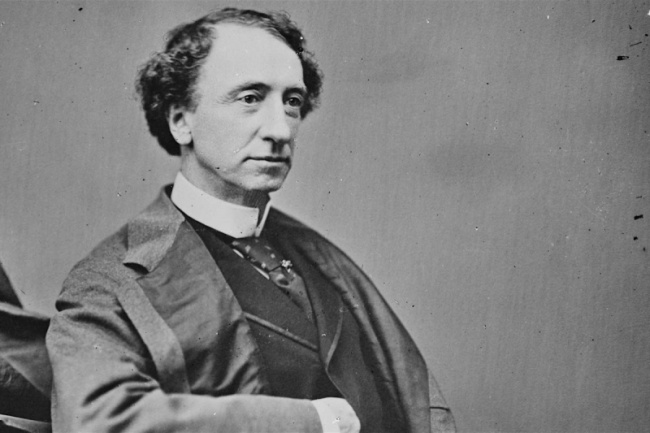
castlegarnews.com
Jacques Cartier
Jacques Cartier (31 December 1491 – 1 September 1557) was a French-Breton maritime explorer for France. Jacques Cartier was the first European to describe and map the Gulf of Saint Lawrence and its shores, which he dubbed “The Country of Canadas” after the Iroquoian names for the two major settlements he saw at Stadacona (Quebec City) and Hochelaga (Montreal Island).
Having discovered the entrance to the St. Lawrence on his first voyage, he now created the most important waterway for European penetration of North America. He produced an intelligent estimate of Canada’s natural and human resources, albeit with a significant exaggeration of its mineral wealth. While some of his actions toward the St. Lawrence Iroquoians were dishonorable, he did try to establish friendship with them and other native peoples living along the St. Lawrence River at times – an essential prerequisite to French settlement in their lands.
Cartier was the first to use the name Canada to describe the territory on the St-Lawrence River. The name comes from the Huron-Iroquois word kanata, which was misinterpreted as the native term for the newly discovered land. Cartier used the name to describe Stadacona, the surrounding land, and the river itself. Cartier named the inhabitants (Iroquoians) he saw there Canadiens. Following that, the name Canada was applied to the small French colony on these shores, and the French colonists were known as Canadiens until the mid-nineteenth century, when the name began to be applied to the loyalist colonies on the Great Lakes, and later to all of British North America. In this sense, Cartier is not strictly the European discoverer of Canada as it is known today, a vast federation stretching a mari usque ad mare (from sea to sea). The Norse, as well as Basque, Galician, and Breton fishermen, and possibly the Corte-Real brothers and John Cabot, had previously visited the eastern parts (in addition of course to the natives who first inhabited the territory). Cartier made a significant contribution to the discovery of Canada by being the first European to penetrate the continent, specifically the interior eastern region along the St. Lawrence River. His explorations helped to solidify France’s claim to the territory that would later be colonized as New France, and his third voyage produced the first documented European attempt at settling North America since Lucas Vázquez de Ayllón’s in 1526-1527.
Cartier’s professional skills are easily discernible. Cartier may be considered one of the most conscientious explorers of the period, given that he made three voyages of exploration in dangerous and previously unknown waters without losing a ship, and that he entered and departed some 50 undiscovered harbours without serious mishap.
Cartier was also among the first to formally recognize the New World as a separate land mass from Europe/Asia.

caboxgeopark.org

thehistoryjunkie.com
Samuel de Champlain
Samuel de Champlain (13 August 1567 – 25 December 1635) was a French colonist, navigator, cartographer, draftsman, soldier, explorer, geographer, ethnologist, diplomat, and chronicler. He made between 21 and 29 trips across the Atlantic Ocean, and on July 3, 1608, he founded Quebec and New France. During his explorations, Champlain created the first accurate coastal map and established several colonial settlements in Canada. Now he is regarded as one of the most important historical figures in Canada.
Champlain began exploring North America in 1603, guided by his uncle, François Gravé Du Pont. After 1603, Champlain’s life and career consolidated into the path he would follow for the rest of his life. From 1604 to 1607, he was involved in the exploration and establishment of Port Royal, Acadia, the first permanent European settlement north of Florida (1605). In 1608, he founded the French settlement that is now known as Quebec City.
Champlain was the first European to describe the Great Lakes, and he published maps of his journeys as well as accounts of what he learned from natives and the French who lived among them. He established long-term relationships with local Montagnais and Innu, as well as tribes from the Ottawa River, Lake Nipissing, and Georgian Bay, as well as Algonquin and Wendat; he also agreed to assist in the Beaver Wars against the Iroquois. He also studied and mastered their respective languages.
Champlain returned to the Wendat late in 1615 and spent the winter with them, allowing him to make the first ethnographic observations of this important nation, the events of which form the bulk of his book Voyages et Découvertes faites en Nouvelle France, depuis l’année 1615, published in 1619. In 1620, Louis XIII of France ordered Champlain to stop exploring, return to Quebec, and devote himself to country administration.
Samuel de Champlain served as Governor of New France in every way except formal title, a title that may have been formally unavailable to him due to his non-noble status. Champlain established trading companies that sent goods, primarily fur, to France, and oversaw the growth of New France in the St. Lawrence River valley until his death in 1635. Many places, streets, and structures in northeastern North America, most notably Lake Champlain, bear his name today.

commons.wikimedia.org

ottawarewind.com
Louis de Buade de Frontenac
Louis de Buade, Comte de Frontenac et de Palluau (22 May 1622 – 28 November 1698) was a French soldier, courtier, and Governor General of New France in North America from 1672 to 1682, and again from 1689 to his death in 1698. He built several forts on the Great Lakes and fought a series of battles against the English and the Iroquois.
During his first term, he advocated for the expansion of the fur trade, establishing Fort Frontenac (in what is now Kingston, Ontario), and clashed with the other members of the Sovereign Council over its expansion and the corvées required to build the new forts. Specifically, despite bishop François de Laval’s opposition, he supported selling brandy to aboriginal tribes, which Laval considered a mortal sin. In 1682, he was recalled due to a disagreement with the Sovereign Council.
During King William’s War, his second term was marked by the defense of Quebec from an English invasion, a successful campaign against Iroquois and English settlements that resulted in the elimination of the Iroquois threat to New France, and a large expansion of the fur trade using Canadian coureurs des bois. He died before being called back to France for the second time.


John Graves Simcoe
John Graves Simcoe (25 February 1752 – 26 October 1806) was a British Army general who served as the first lieutenant governor of Upper Canada in southern Ontario and the watersheds of Georgian Bay and Lake Superior from 1791 to 1796. He established York, now known as Toronto, and was instrumental in establishing institutions such as courts of law, jury trials, English common law, and freehold land tenure, as well as the abolition of slavery in Canada.
His long-term goal was to establish Upper Canada (Ontario) as a model community based on aristocratic and conservative principles, with the goal of demonstrating the superiority of those principles over American republicanism. His zealous efforts to establish a local gentry, a thriving Church of England, and an anti-American coalition with select indigenous nations were only partially successful. Many Canadians regard him as a founding figure in Canadian history, particularly in Southern Ontario. He is also among the most important historical figures in Canada. Simcoe Day is named after him in Toronto.
Simcoe was laid to rest in Wolford Chapel on the Simcoe estate near Honiton, Devon. The Ontario Heritage Foundation purchased the chapel in 1982.
Many of Simcoe’s personal effects, including his sword, sabre, and walking cane, are on display at the Archives of Ontario in Toronto by appointment. There are also hundreds of Elizabeth Simcoe’s watercolour paintings and personal effects on display.
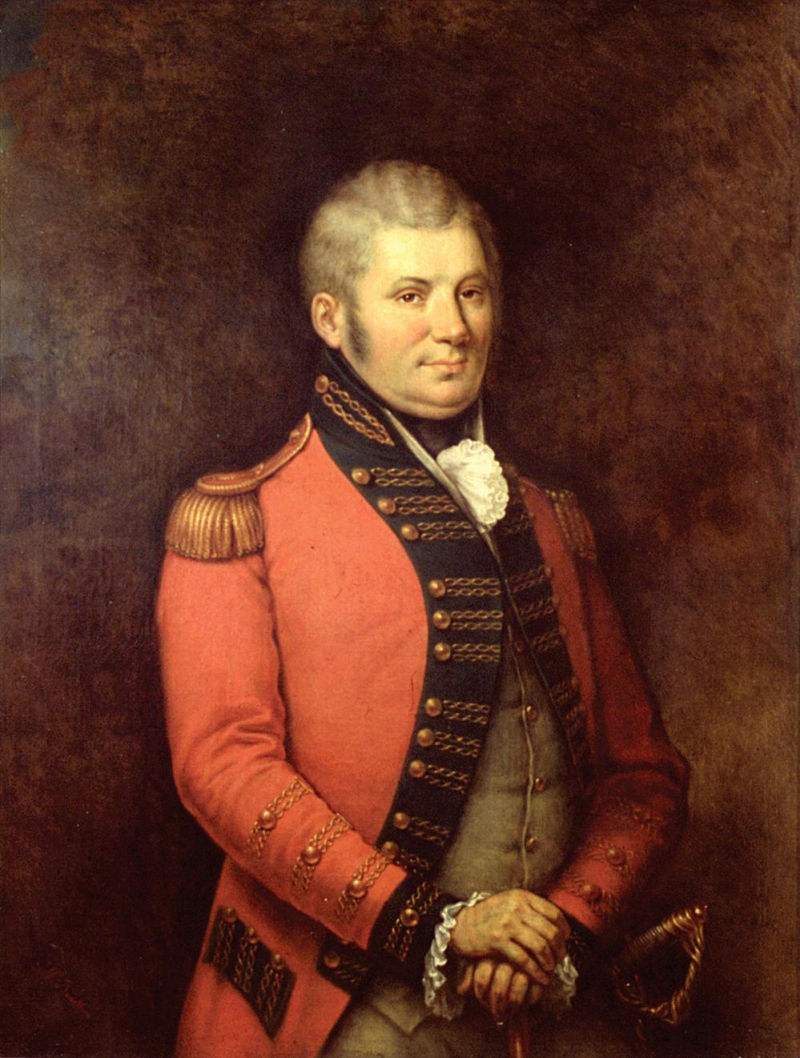
en.wikipedia.org
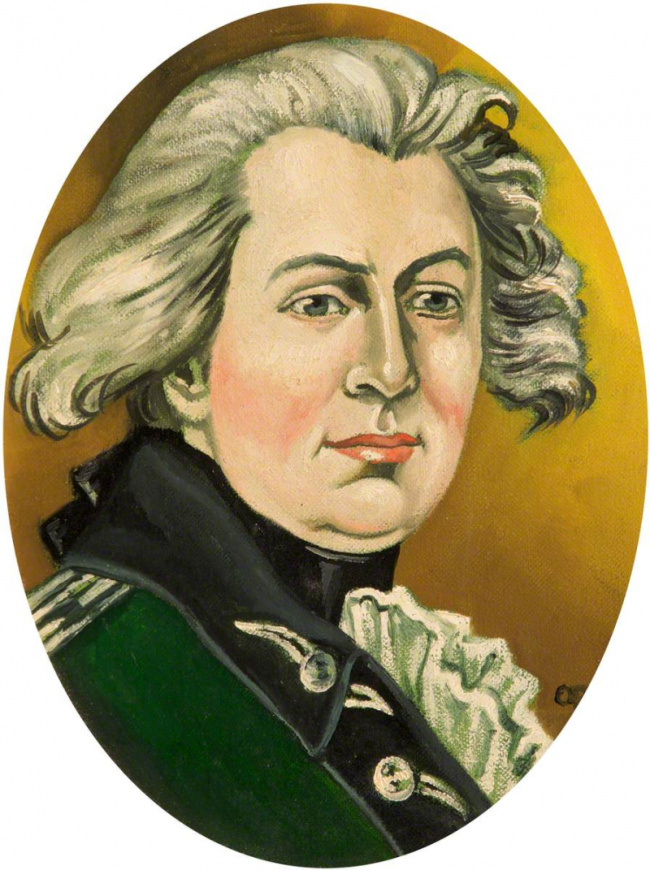
artuk.org
Isaac Brock
Major-General Sir Isaac Brock KB (October 6, 1769 – October 13, 1812) was a British Army officer and Guernsey colonial administrator. In 1802 Brock was assigned to Lower Canada. Despite desertions and near-mutinies, he successfully led his regiment in Upper Canada (part of modern-day Ontario) for many years. He was promoted to major general and was in charge of defending Upper Canada against the US. While many people in Canada and the United Kingdom believed that war could be avoided, Brock began to prepare the army and militia for what was to come. When the War of 1812 broke out, the people were ready, and quick victories at Fort Mackinac and Detroit thwarted American invasion attempts.
Brock’s accomplishments, particularly his success in Detroit, earned him a knighthood in the Order of the Bath and the moniker “The Hero of Upper Canada.” Although the two men only collaborated in person for a few days, their names are frequently linked. Brock died at the Battle of Queenston Heights, which the British won.
Brock is regarded as one of Canada’s greatest military heroes. He was voted number 28 on the television show The Greatest Canadian, despite the fact that he was not born or naturalized in Canada.
Despite the fact that many Canadians have come to regard Brock as one of their own, Brock never truly felt at home in Canada. On the whole, he saw Canada as a backwater, and he longed to return to Europe to fight Napoleon. Brock distrusted the Canadian colonists, many of whom he suspected of being American sympathizers, and he was hesitant to arm them indiscriminately to help defend the colonies. He advocated for the use of British regulars and Tecumseh’s warriors, as well as the expansion of volunteer forces that could be trained and supervised.
Several legends and myths about Brock have emerged since his death. The story of Brock’s betrothal to Sophia Shaw, the daughter of General neas Shaw, was first published in 1908. There is no supporting evidence for the claim, and most biographers consider it apocryphal. In 1859, a legend about Brock’s horse Alfred was published. The horse was allegedly shot and killed during the battle while being ridden by Macdonell, and it is commemorated in a monument erected in 1976 in Queenston near the cairn marking the spot where Brock fell. However, little evidence supports this account.
An unknown company issued a series of private half-penny tokens honoring Brock as “The Hero of Upper Canada” in 1816. Due to the initial distrust of “army bills,” paper notes issued by Brock when there was a currency shortage caused by economic growth, private copper tokens became common in Canada.
Brockville and Brock in Ontario, Brock in Saskatchewan, the General Isaac Brock Parkway on Highway 405, and Brock University in St. Catharines, Ontario have all been named in his honor. One school in Winnipeg is named after him, as are public schools in Toronto, Guelph, Hamilton, London, Vancouver, and Windsor, Ontario. The province erected an Ontario Historical Plaque to commemorate Major-General Sir Isaac Brock’s role in Ontario’s heritage. A section of Spadina Avenue south of Queen Street in Toronto was once named Brock Street in his honor.
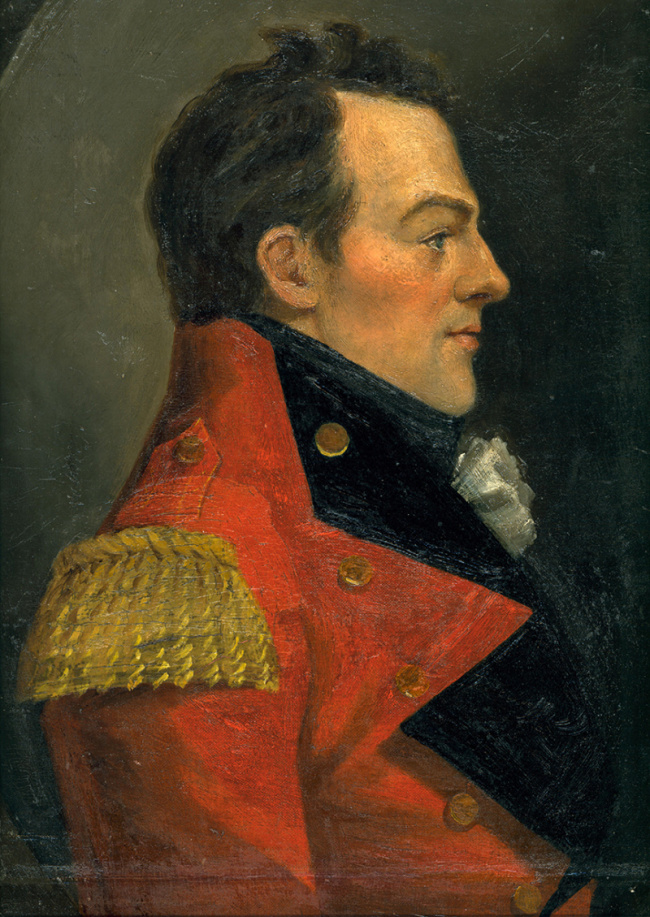
brocku.ca
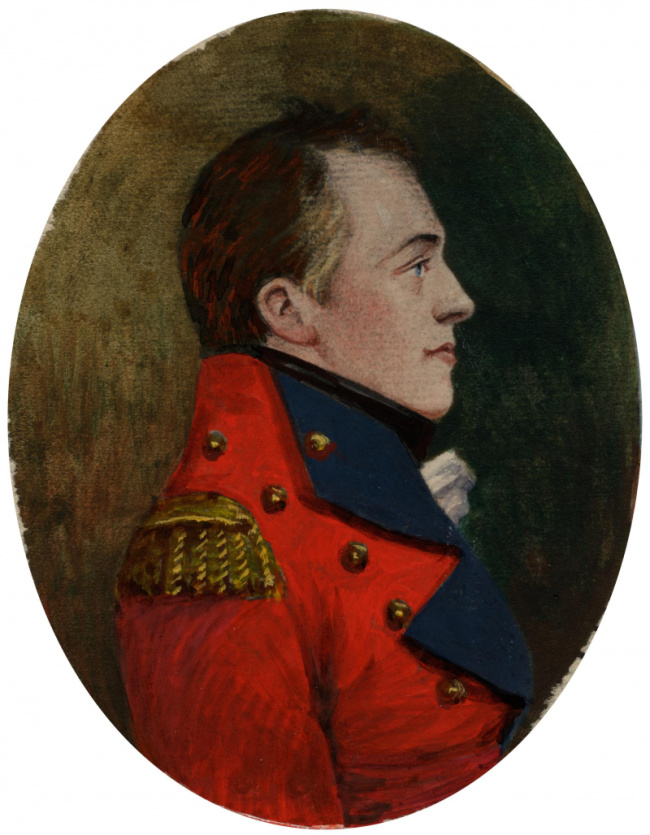
digitalarchive.tpl.ca
George-Étienne Cartier
Sir George-Étienne Cartier, 1st Baronet (September 6, 1814 – May 20, 1873) was a Canadian statesman and Father of Confederation. The English spelling of his name – George, rather than Georges, the usual French spelling – is explained by his being named in honor of King George III. He is among the most important historical figures in Canada.
As leader of the Parti bleu in the years leading up to Confederation, Cartier was a dominant figure in Canada East politics. After a year in exile for his role in the Lower Canada Rebellion, he returned to Montreal in 1838. In 1848, he officially entered politics. Throughout his long career, he advocated for the adoption of the Civil Code as the formal law of Canada East, rather than the use of common law, as was the case in Canada West. He also advocated for the implementation of primary education in the province. Cartier supported Confederation for a variety of reasons, including his fear of American expansion. On May 20, 1873, he died in London, England.
Cartier’s most significant contribution to his country is the admission of Canada East (Quebec) to the Confederation. Upper and Lower Canada were merged into a single colony following the rebellions of 1837/1838 and the Durham Report. The United Kingdom had begun to sever ties with its North American colonies. The United States was becoming increasingly powerful and posed a threat to Canada. In 1864, George Brown, leader of the Clear Grits in Canada West (Ontario), proposed an alliance with Macdonald and Cartier’s Conservatives. Following a series of discussions and conferences (at Charlottetown and Quebec), the Grand Coalition alliance succeeded in forging the agreement that gave birth to Confederation in 1867. The new federal government met in Ottawa from this point forward. He helped to found the Société Saint-Jean-Baptiste patriotic society in 1834, where he sang his famous poem “Ô Canada, mon pays! mes amours!” (Not to be confused with Canada’s national anthem.)
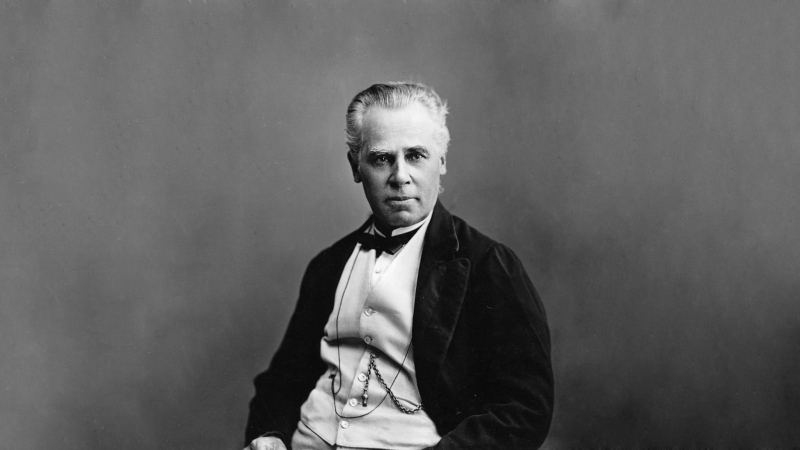
macleans.ca
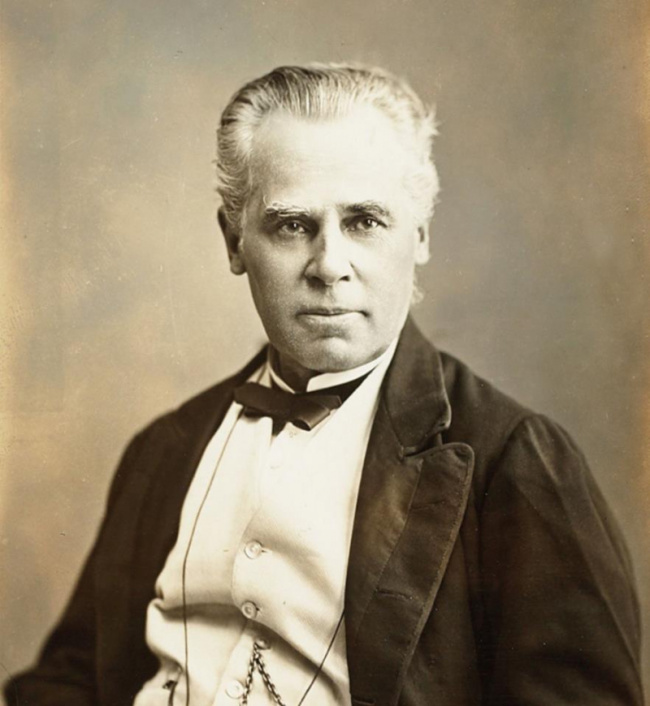
Arthur Currie
General Sir Arthur William Currie (5 December 1875 – 30 November 1933) was a Canadian Army officer who fought in World War I. He had the unique distinction of beginning his military career as a pre-war militia gunner before rising through the ranks to become the first Canadian commander of the Canadian Corps. Currie’s success stemmed from his ability to quickly adapt brigade tactics to the demands of trench warfare, employing set piece operations and bite-and-hold tactics. He is widely regarded as one of the most capable Western Front commanders and one of the greatest commanders in Canadian military history.
Currie began his military career as a part-time soldier in the Canadian militia in 1897, while also working as a teacher, insurance salesman, and real estate speculator. Currie rose quickly through the ranks, becoming an officer in 1900, captain in 1901, major in 1906, and artillery regimental commander in 1909. Currie accepted command of the newly formed Gordon Highlanders of Canada 50th Regiment in 1913. Currie was in debt after a real estate crash in Victoria, so he embezzled $10,000 earmarked for regimental uniforms into his personal accounts to pay off his debts. When the First World War broke out, Currie was appointed commander of the 2nd Canadian Brigade by Canadian Minister of Militia Sam Hughes. Currie was promoted to major-general and commander of the 1st Canadian Division after the Second Battle of Ypres. Following the Battle of Vimy Ridge, Julian Byng, commander of the Canadian Corps, was promoted to general, and Currie, commander of the 1st Canadian Division, was promoted to lieutenant-general and assumed command of the Canadian Corps. Currie was promoted to general and appointed Inspector General of the Canadian Army upon his return to Canada. Despite having only a high school diploma, Currie was appointed principal and vice-chancellor of McGill University in 1920, a position he held until his death in 1933.
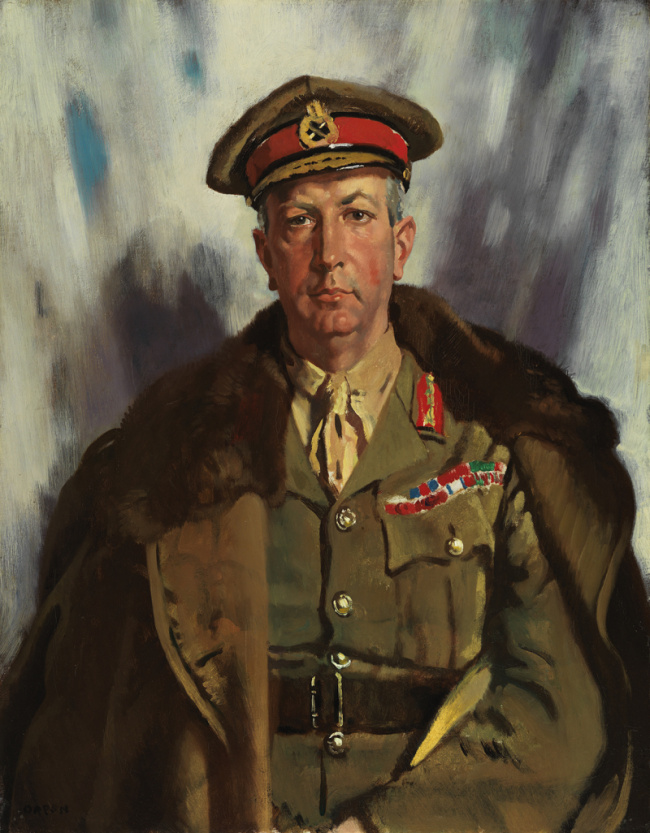
thecanadianencyclopedia.ca
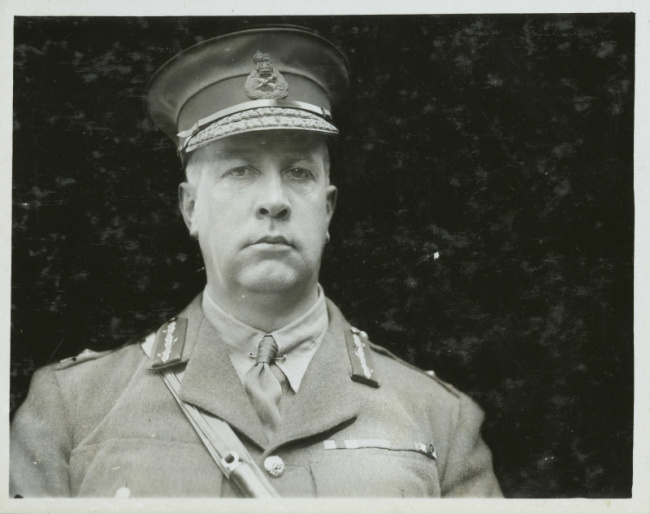
warmuseum.ca
James Gladstone
James Gladstone (May 21, 1887 – September 4, 1971) was a Canadian politician who claimed to be the first Treaty Indian to be appointed to the Senate of Canada.
Gladstone returned to the Blood reserve as an interpreter after finishing school in 1905. He also found work wrangling cattle on ranches. In 1911, he found work as a scout and interpreter for the Royal North-West Mounted Police, as well as a mail carrier on the reserve. He was also a typesetter for the Calgary Herald at one point.
Janie Healy, a Blood member, was his wife. He became a member of the Blood reserve after his marriage. Gladstone eventually established himself as a farmer and successful rancher (with 720 acres under cultivation and a herd of 400 Hereford cattle in 1958), working with his sons to assemble the 400 cattle and introducing modern farming practices to the reserve, including the first use of a tractor in 1920.
Gladstone was elected president of the Indian Association of Alberta in 1949, though another source lists his presidency as 1945-1954, and was dispatched to Ottawa three times to lobby for changes to the Indian Act. His acceptance by both the Blackfoot and the Cree aided him in uniting the various groups into a single political organization.
At the age of 70, he was nominated to the Senate by Progressive Conservative Prime Minister John Diefenbaker in January 1958, two years before status Indians gained the vote in federal elections, and he advocated for Aboriginal enfranchisement. Considered as one of the most important historical figures in Canada, he sat in the House of Commons as an “independent Conservative,” “representing 160,000 Indians across the country.” He advocated for Indian integration into Canadian society. He presided over the Standing Committee on Indian Affairs. To meet the Senate’s property requirements, “he drove with his wife to nearby Cardston and paid cash for a five-room bungalow.”
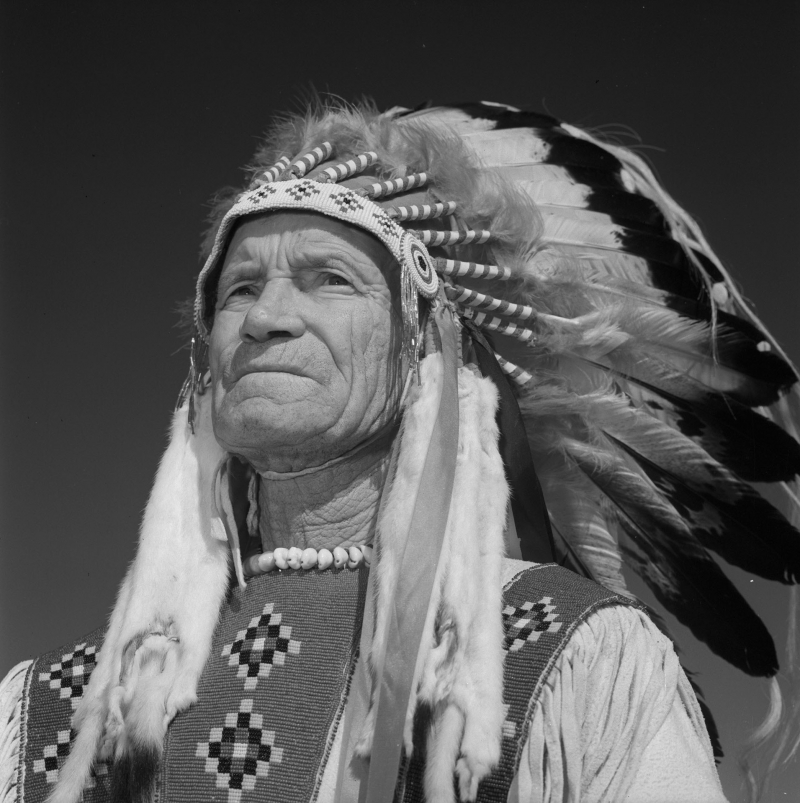
photostories.ca
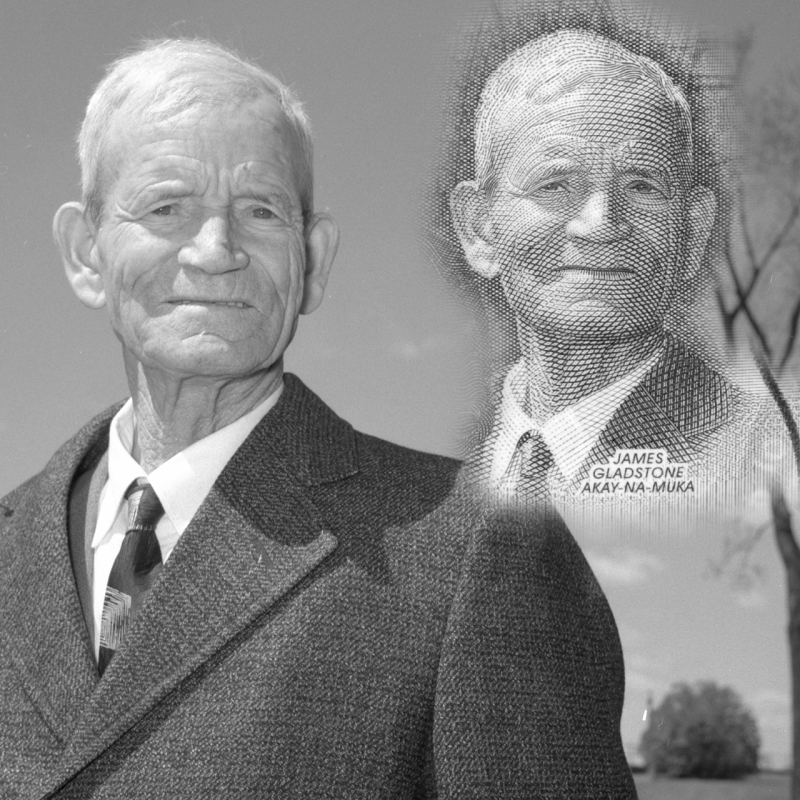
yorkwestadvocate.com
Viola Desmond
Viola Irene Desmond (July 6, 1914 – February 7, 1965) was a Black Nova Scotian civil and women’s rights activist and businesswoman. In 1946, she refused to leave a whites-only section of the Roseland Theatre in New Glasgow, Nova Scotia, to protest racial segregation. She was convicted of a minor tax violation for the one-cent tax difference between the seat she paid for and the more expensive seat she used. Desmond’s case was one of the most widely publicized cases of racial discrimination in Canadian history, and it helped launch Canada’s modern civil rights movement.
Desmond received the first posthumous free pardon in Canada in 2010. A free pardon considers the person granted the pardon to have never committed the offence and cancels any consequences resulting from the conviction, such as fines, prohibitions, or forfeitures. However, it was not until 2021 that the government repaid the $26 fine to her estate in the form of a $1,000 scholarship that adjusted the amount to reflect the time value of money.
Desmond became the first Canadian woman to appear alone on a Canadian bank note in late 2018 – a $10 bill unveiled by Finance Minister Bill Morneau and Bank of Canada Governor Stephen Poloz on March 8, 2018 at the Halifax Central Library. Desmond was also named a National Historic Person in 2018.
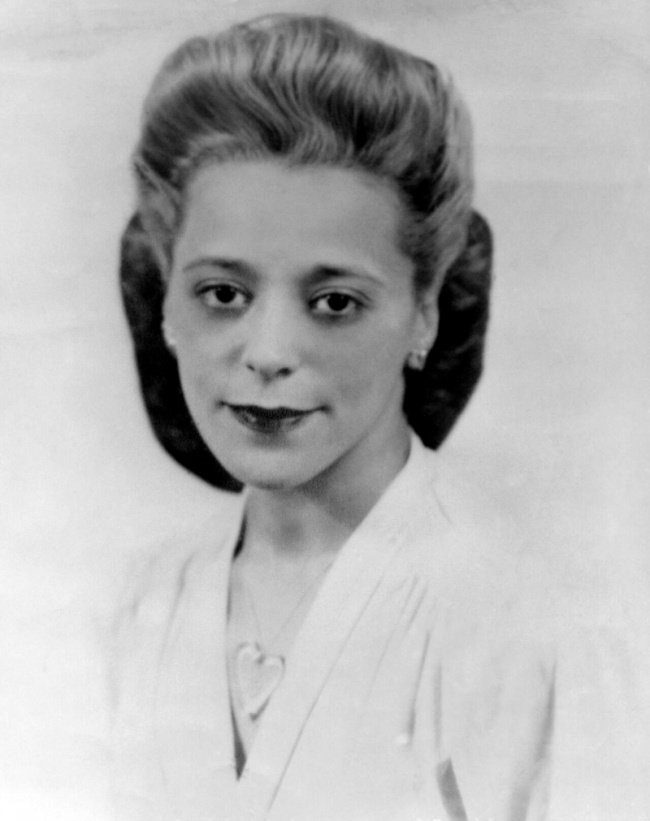
vi.wikipedia.org
